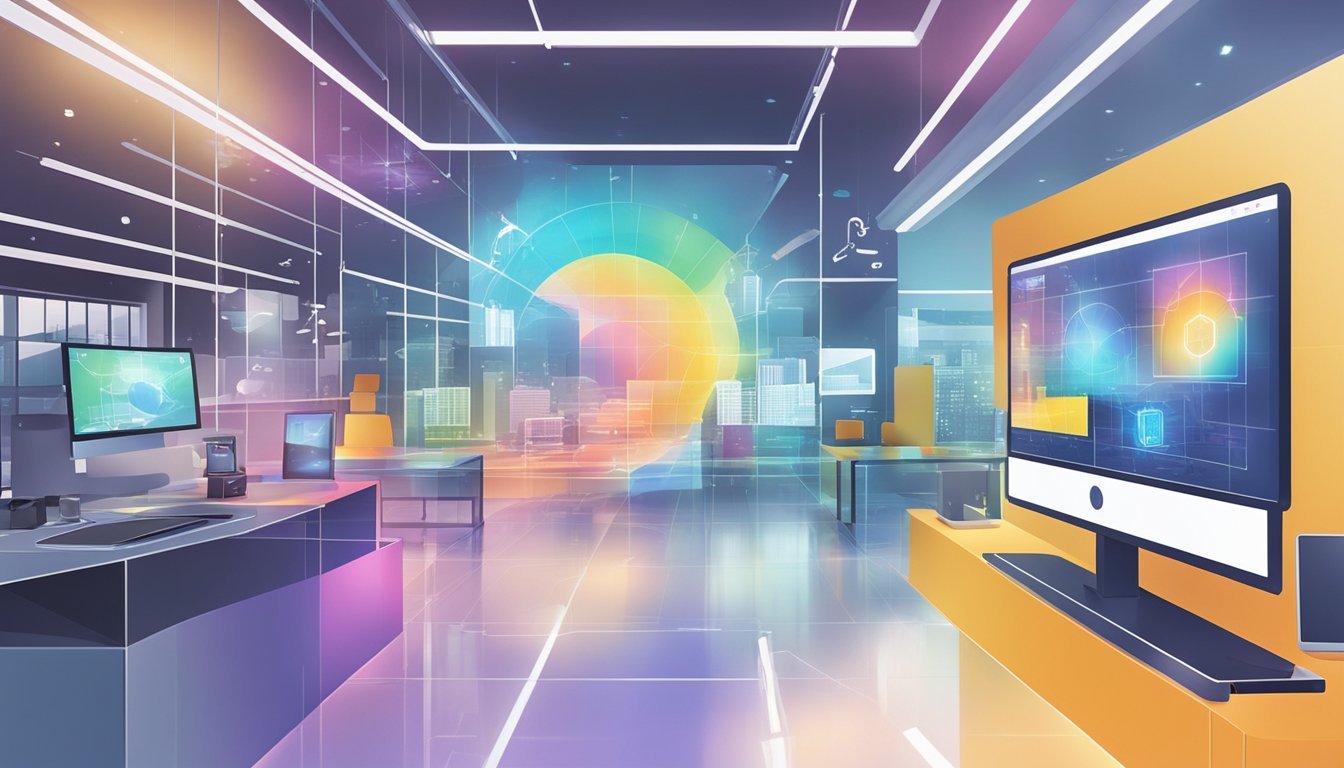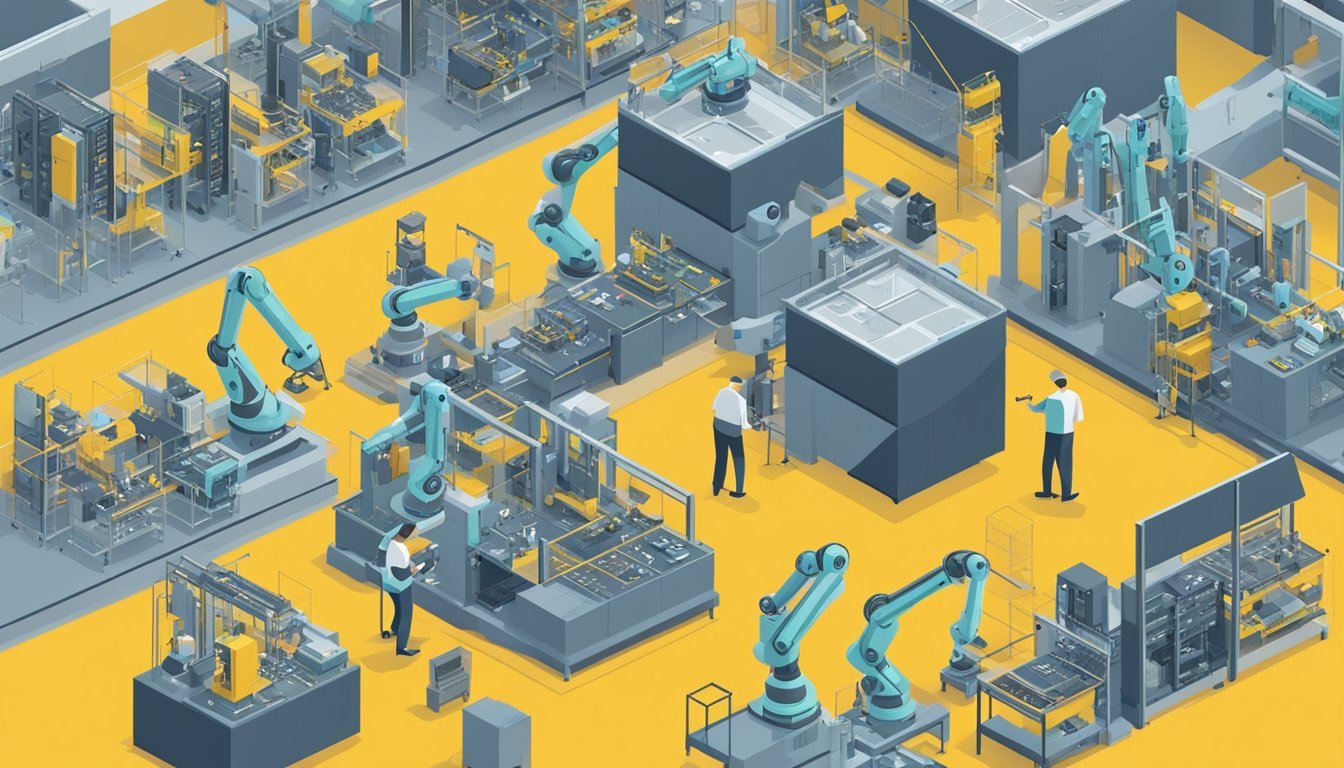Unlocking the Potential of Spatial Computing in Industry Innovation
Spatial computing is rapidly transforming how industries operate, innovate, and deliver services. It brings together the physical and digital worlds in ways that were previously unimaginable, allowing for the creation of environments where humans can interact with digital content in a realistic manner.
As this technology advances, it is paving the way for immersive experiences that were once confined to the realm of science fiction.
Industries ranging from healthcare to urban planning are witnessing paradigm shifts as spatial computing provides a framework for complex visualizations, interactive simulations, and real-time analytics.
In the field of healthcare, for instance, spatial computing is enhancing patient care by contributing to detailed surgical planning and medical training through virtual reality (VR) visualizations.
By superimposing digital information onto the physical space, surgeons can access a new level of detail and precision during procedures.
Similarly, industries such as construction and manufacturing are leveraging this technology to visualize projects and workflows before they are realized, minimizing risks and streamlining the decision-making process.
With the advent of this revolutionary technology, businesses are beginning to implement spatial computing into their strategies, transforming not only their workflow but also the way they interact with customers and stakeholders.
The implications of spatial computing are extensive, and its applications continue to grow as various sectors recognize the value of merging digital data with the physical environment, leading to more dynamic, efficient, and engaging outcomes.
Basics of Spatial Computing
Spatial computing is fundamentally altering how industries operate, meshing the digital with the physical world and enabling new ways of interacting with technology.
Definition and Core Concepts
Spatial computing encompasses a variety of technologies that merge the digital and physical spaces. It enables computers, driven by AI, to recognize and interact with the environment in real-time.
Core concepts include Augmented Reality (AR), where digital information overlays the physical world, Virtual Reality (VR), which immerses users completely in a digital environment, and Mixed Reality (MR), which combines elements of both.
These technologies offer transformative applications across numerous fields, allowing for enhanced data visualization and interaction.
Evolution and Technological Advancements
The technological advancements in spatial computing have been significant.
Initiatives like those by Simon Greenwold in the early 2000s laid foundations for understanding spatial relationships in computing.
Since then, the field has seen leaps forward with more sophisticated AI algorithms, enhanced sensor and display technologies, and more powerful hardware.
Industries are harnessing these advancements for diverse applications, from complex medical procedures to advanced design and manufacturing processes, redefining their respective frontiers.
Key Technologies and Hardware
This section examines the essential technologies and hardware facilitating the advent of spatial computing in various industries, focusing on how they contribute to augmented reality (AR) and virtual reality (VR) experiences.
Headsets and Display Gear
Headsets form the cornerstone of user interaction with AR and VR environments.
Apple, Google, Microsoft, and Meta have all invested heavily in developing headsets that are more lightweight, have higher resolutions, and offer wider fields of view.
For instance, Microsoft's HoloLens and Meta's Quest series are at the forefront, allowing for immersive experiences where virtual objects are layered onto the real world or completely different virtual environments are explored.
Sensors and Cameras
Sensors and cameras are pivotal in spatial computing, enabling devices to understand and interact with their surroundings.
They track head movements, eye movements, and spatial orientation to seamlessly merge real and virtual worlds.
For instance, cameras are used to map the environment while sensors, such as accelerometers and gyros, detect user motions to adjust the experience in real-time.
These capabilities are crucial in creating believable and responsive AR/VR environments.
Computing Platforms and Software
Lastly, the backbone of spatial computing lies in its computing platforms and software.
Robust software development kits (SDKs) and APIs provided by companies like Apple with ARKit, Google with ARCore, and Amazon Web Services (AWS) provide the tools for developers to create complex AR and VR applications.
These platforms process vast amounts of data from sensors and cameras to render high-fidelity virtual environments while also managing power consumption and connectivity, balancing performance with user comfort.
Spatial Computing Applications
Spatial computing is rapidly enhancing various industry sectors by integrating the digital and physical worlds, resulting in more immersive, interactive, and efficient experiences.
Gaming and Entertainment
The gaming and entertainment industries are experiencing a transformation with spatial computing.
Augmented reality (AR) and virtual reality (VR) are creating immersive experiences that extend beyond traditional screens.
For instance, Epic Games utilizes spatial computing to develop more engaging video games where players can interact with a three-dimensional environment in real-time.
Healthcare and Medical Training
In healthcare, spatial computing facilitates advanced training simulations.
Medical professionals can practice complex surgeries in VR environments, which significantly improves their skills without risking patient safety. This application ensures that healthcare workers receive thorough training, enhancing the quality of medical care.
Manufacturing and Engineering
Manufacturing and engineering sectors are implementing spatial computing for 3D modeling and design collaboration.
These tools allow engineers to visualize and manipulate models in a shared virtual space, leading to better-designed products and streamlined production processes.
Retail and Marketing
In the realm of retail and marketing, spatial computing is revolutionizing user experience design and virtual enhancements.
Retailers are using immersive technologies to create personalized shopping experiences, allowing consumers to try products virtually before purchasing, which enriches the user experience and boosts sales.
Impacts on Society
Spatial computing is altering the fabric of social interactions and the efficiency of the workforce. It reshapes education and trains by offering immersive, interactive experiences that blend with reality.
Alteration in Human Interaction
Spatial computing is drastically changing how individuals connect and interact.
Incorporating augmented reality (AR) into daily life introduces a new dimension to human interaction.
Through advanced human-machine interaction, spatial computing supports more natural and intuitive ways for people to engage with digital information and with one another, enhancing collaboration and social bonding.
Influence on Workforce Efficiency
The adoption of spatial computing in the workplace is having a profound effect on worker productivity.
By providing employees with tools for better visualization and interactive experience, tasks are completed more swiftly and accurately.
These advancements in technology offer substantial support for complex problem-solving and decision-making, which in turn boosts efficiency and streamlines workflow.
Changes in Education and Training
In the realms of education and training, spatial computing transforms learning into an interactive and engaging process.
Immersive technologies like AR facilitate a hands-on approach, improving knowledge retention.
They enable simulation-based training environments, where learners can practice skills in a controlled, yet realistic setting, greatly enhancing the interactive learning experience and preparing students and professionals for real-world applications.
Integration with Emerging Technologies
As spatial computing progresses, it intersects with other emerging technologies to enhance functionality across various industries, leading to innovative applications.
Machine Learning and AI
Spatial computing harnesses the power of machine learning (ML) and artificial intelligence (AI) to automate complex tasks.
These technologies help interpret spatial data, enabling functionalities such as computer vision and generative AI.
For example, in autonomous vehicles, AI algorithms process data from sensors to navigate environments safely.
Moreover, machine learning models continuously improve through exposure to vast datasets, increasing precision in spatial analysis.
Internet of Things (IoT)
The Internet of Things (IoT) converges with spatial computing, particularly through the use of sensors and real-time data processing.
This integration transforms industries by enabling an interconnected fabric of devices that communicate spatial information seamlessly.
For instance, in smart cities, IoT devices offer insights into traffic patterns, resource usage, and urban planning, fueling the global market demand for responsive, data-driven environments.
Cloud Computing and Scalability
Cloud computing offers the backbone required for spatial computing to scale effectively.
It provides the computational power necessary to handle large volumes of data from spatial technologies.
With platforms like AWS, the storage and processing of data occur in a decentralized, accessible manner, permitting scaling solutions across geographical boundaries.
The cloud's robust infrastructure is pivotal for supporting the computational load and storage needs, ensuring the scalability and integration of spatial computing within global industries.
Challenges and Considerations
As spatial computing weaves into various industries’ fabric, addressing some pivotal challenges and considerations becomes crucial for its sustainable and responsible growth.
Privacy and Ethics
A paramount concern with the deployment of spatial computing technology lies in privacy and ethics.
As it involves collecting and processing vast amounts of data about physical environments, ensuring that sensitive information is not exploited is essential.
Companies implementing this technology must comply with privacy regulations and establish transparent data handling practices.
There are also ethical considerations, such as the potential for unauthorized surveillance.
Technical and Scalability Issues
Technical hurdles also present significant challenges in the development of spatial computing systems.
They must seamlessly integrate with existing infrastructure while also being able to capture, analyze, and manage high volumes of data in real-time.
Scalability is another major consideration; solutions must not only work efficiently on a small scale but also maintain functionality when scaled to meet broader demands.
Cost Implications
The costs associated with adopting spatial computing technologies can be prohibitive for some organizations.
Initial investments in advanced sensors and hardware, software development, and ongoing operation expenses require substantial financial resources.
This cost barrier can slow down the democratization of spatial computing across various sectors of society.
The Future of Spatial Computing
Spatial computing is poised to significantly alter the landscape of various industries, offering enhancements in user experience, expanding the frontiers of digital content, and driving market trends as it burgeons into a multi-billion dollar industry.
Predictions and Market Trends
The global market for spatial computing is expected to experience robust growth, with revenue projections reaching nearly $100 billion by 2030.
The intersection of digital twins and real-world applications propels this expansion, offering both consumers and enterprises unparalleled opportunities for efficiency and engagement.
Projected revenue for the industrial metaverse by 2030: Nearly $100 billion
Consumer market projection: $50 billion
Enterprise market projection: $30 billion
Advancements in User Experience Design
User experience design within the realm of spatial computing is evolving to accommodate interactive experiences that transcend conventional screen boundaries.
The integration of augmented reality and virtual reality is fostering immersive environments where users can manipulate digital twin simulations with increasing intuitiveness and precision.
Key user experience advancements: intuitive interfaces, increased precision in digital twin simulations
Contributing technologies: augmented reality (AR), virtual reality (VR)
Impact on Digital Content and Media
Spatial computing revolutionizes the creation and consumption of digital content through its ability to overlay interactive experiences onto the physical world.
This blending of digital and physical realities offers media and entertainment industries fresh avenues to engage audiences. It also transforms educational and training material with interactive simulations.
Industries under influence: media, entertainment, education, training
Key benefits: heightened engagement, enhanced educational and training experiences





